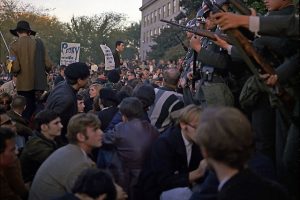10 Unbelievable Things People Actually Wait Years to Experience
Some people believe that patience is more than just a virtue — it’s a kind of quiet strength. There’s this old idea that “good things come to those who wait”, and maybe there’s truth in that. In a world obsessed with instant gratification, it’s easy to forget that waiting can make a moment sweeter, or an outcome more meaningful. But — and here’s the twist — waiting too long can be its own kind of trap.
Like, imagine standing in line for hours to try the world’s most viral food trend, or refreshing your screen endlessly for a limited-edition sneaker drop. Sounds ridiculous? Maybe. But the truth is, people will go to wild lengths when they believe something rare, exciting, or downright unbelievable is just around the corner.
That’s the strange balance: moderation. It’s okay to indulge in anticipation — to let the build-up create that spark — but it shouldn’t become an endless delay. Yet, somehow, humans are wired to wait. For the perfect moment. For that once-in-a-lifetime event. For the unbelievable to show up and blow our minds.
What exactly are people willing to wait forever for? You’d be surprised. From legendary natural phenomena to bizarre world records and tech releases that border on mythical, the list is as weird as it is fascinating. Here are 10 examples that will make you think twice about what you’re willing to stand in line for — and for how long.
10. Would You Wait 43 Years for a Snack? The Incredible Story of Japan’s Most Elusive Croquettes

Have you ever stood in line at a crowded bakery or waited for your number to be called at a barbershop, silently hoping your turn comes before you lose patience? Now imagine this: you take a number and… it’s not called for 43 years. Sounds insane, right?
Welcome to Japan’s Asahiya butcher shop — a small, family-run business that’s made a huge name for itself by doing something almost unthinkable. They’ve created a deep-fried dish so tempting, so unbelievably popular, that people are willing to wait decades just to get a taste. We’re talking about their now-legendary Kobe beef croquettes.
These aren’t your average frozen grocery-store croquettes. Each one is a carefully handcrafted dumpling filled with a tender mix of locally sourced Kobe beef and fluffy potatoes, then coated in a golden crisp shell. They’re fried fresh every single day. Delicious? Absolutely. Scarce? You bet. As of 2024, the waitlist for their “Extreme Croquettes” has reached a jaw-dropping 43 years.
So what exactly makes them extreme? Is it the flavor? The ingredients? The technique? Well, not exactly. It turns out, the extremity comes from a clever twist in marketing strategy.
Back in the early 2000s, Asahiya’s owner noticed that selling expensive beef online was a hard pitch. So he flipped the idea on its head. He began offering croquettes stuffed with premium beef — $2.70 worth of meat — for just $1.80. That’s right, they sold these gems at a loss. Why? Simple: to let people experience the quality firsthand, hoping they’d come back and buy their higher-end cuts at full price.
But with handmade production, limited stock, and word-of-mouth spreading like wildfire, the demand exploded. Fast-forward to today, and the humble croquette has transformed into a food legend with a queue longer than some people’s entire careers.
Still want one? You can try their other croquette line, which has a mere 4-year wait — practically instant compared to its big brother.
9. How a Two-Year-Old Waited 47 Years for Green Bay Packers Tickets

In the United States, football isn’t just a sport — it’s practically a religion. Even people who don’t care about touchdowns or penalties still tune in for the Super Bowl halftime show or the million-dollar commercials. But for fans who bleed green and gold, there’s nothing like seeing a Green Bay Packers game live at Lambeau Field.
Here’s the catch: actually getting your hands on season tickets is a feat that borders on the impossible.
If you’re a true Cheesehead, season tickets aren’t just a dream — they’re a lifelong goal. Take Michelle Hensel, for example. Her parents added her to the Packers’ waitlist when she was just two years old. She finally got her tickets… 47 years later. That’s not dedication — that’s legacy planning.
Currently, the waitlist is sitting at a jaw-dropping 147,000 names. And no, that’s not a typo. Every year, hopefuls receive a postcard that politely informs them of their new position on the list. They inch forward, spot by spot, in a process that feels slower than glacial drift.
Each year, roughly 100 to 200 people move up. That’s it. So unless someone ahead of you gives up their place (which almost never happens), you’re in it for the long haul. When your moment finally arrives, you’ll get a letter notifying you that your tickets are available. But there’s a catch — miss your payment window, and your spot vanishes like a fumbled snap, handed off to the next person.
It’s a wild system, but it speaks volumes about the culture of loyalty that surrounds this team. Green Bay isn’t a big city. But the team? It has one of the most passionate fanbases in all of sports, and clearly, they’re willing to wait a lifetime to be part of it.
8. Want a Canadian Flag from Parliament? Better Sign Up for Your Great-Grandchild

You can be the proudest patriot on your street, but unless you’ve got a century to spare, don’t count on hanging a certain very special flag outside your home anytime soon.
In Canada, citizens have the rare opportunity to request a national flag that once flew over the iconic Peace Tower — that tall, slender landmark crowning Parliament Hill in Ottawa. Every single day, a new flag is raised on the tower, and when it comes down, it doesn’t go to waste. Instead, it becomes a free keepsake for someone who requests it through the government’s official program.
Sounds like a beautiful idea, right? A little piece of national history for your front porch or living room. But there’s a catch — and it’s a big one.
Only 365 flags are retired each year. Meanwhile, Canada is home to over 39 million people, not counting schools, museums, or other organizations that may also put in a request. The result? A massive waitlist — one that currently stretches out over 100 years.
That’s not a typo. If you sign up today, odds are you’re not getting a flag for yourself. You’re getting it for your grandkids. Or maybe their kids.
Back in the early 2000s, the wait was just under two decades. People were shocked — and delighted — when they got their flags “early,” sometimes after only 14 years. But as more people discovered the program, the list grew exponentially. Today, you’re more likely to leave the flag in your will than see it on your own front lawn.
It’s a bit wild when you think about it: a flag, a government program, and a century-long queue. But that’s what makes it so fascinating. It’s not just a piece of cloth — it’s a symbol of history, patience, and pride, wrapped in red and white and tied up in a long, long wait.
7. These Dogs “Flunked” Service School—And There’s a 5-Year Wait to Adopt One

Not every dog is cut out for greatness—at least not the kind that involves navigating crosswalks or sensing blood sugar crashes. Service dogs go through intense, specialized training to assist people with disabilities, from guiding the visually impaired to alerting for seizures. But what happens to the pups who don’t quite make the grade?
They get a second chance—as pets. And the twist? These so-called “dropouts” are so well-behaved and lovable that there’s a five-year waitlist just to adopt one.
Don’t feel bad for these dogs. They’re not failures—they just had a career change. Organizations like Guide Dogs of America (GDA) have even coined the term “Career Change Dogs” for the ones who didn’t finish the program. It’s a gentler, more fitting label, because these pups are still incredibly special—they’re house-trained, socialized, and often know more commands than your average pet.
So why the wait? Well, everyone wants one. You’re essentially getting a super-trained dog with a sweet temperament, without the service dog price tag or job expectations. People across the country apply, hoping to bring one home. GDA’s waitlist hit five years—and they’ve even had to close it off temporarily because demand was so overwhelming.
Other organizations may have shorter waits—anywhere from a few months to a few years, depending on your location and their policies. But the moral of the story is clear: even the “rejects” of service dog school are in high demand.
6. A New York Restaurant with a 10 – Year Waitlist? It’s a Reality
You know, when we talk about things that often come with a long wait, restaurants are definitely on the list. It’s not uncommon at all. If there’s a ritzy eatery in town, one run by a highly – regarded chef, it’s not unusual to wait for months just to get a seat. And that’s only if you’re lucky!
In New York, there’s this rather extraordinary restaurant. It stopped taking new reservations all the way back in 2014. And here’s the kicker – it’s still filling those old reservations in 2024! This place, run by Damon Baehrel, has a very limited seating capacity. Just 20 people can be seated at a time. That’s one of the main reasons why the waitlist has gotten so out of control.
Another factor is its location. It’s in the chef’s basement. And Damon Baehrel works alone. There are no sous chefs or any other staff to help him out. So, in a way, by keeping the number of bookings tight, he’s kind of controlling his own workload. It makes sense, right?
Now, here’s something really unique about this restaurant. There’s no such thing as a fixed menu. Every day, what you get is whatever the chef has cooked up that day. It’s like a surprise package. The chef, being the forager that he is, will use local ingredients to whip up a meal for you. It’s something like a 20 – item tasting menu. And according to the reviews, all that waiting is totally worth it. If you’re someone who loves unique dining experiences, this place might just be on your must – visit list in the future.
5. Why Waiting for Subsidized Housing Can Take Over a Decade in North America

Finding a roof over your head shouldn’t feel like winning the lottery—but for thousands of people in Canada and the United States, getting into subsidized housing is starting to look exactly like that. The problem isn’t just affordability—it’s the incredible wait times, which can stretch anywhere from 7 to 14 years, depending on where you live.
In cities like San Diego, applicants for public housing often find themselves in line for over 12 years. That’s not a typo. In fact, by the time someone in the area finally gets a housing voucher, they’ve waited through multiple presidential terms, housing crises, and economic shifts.
Canada’s not much better off. In Toronto, one of the country’s most expensive housing markets, the wait for a modest one-bedroom subsidized unit can stretch to 14 years. In Montreal, it’s around six. So where do people go in the meantime? That’s the big, uncomfortable question—and for many, the answer is couch-surfing, living in shelters, or teetering on the edge of homelessness.
What’s driving these never-ending waitlists? In Canada, part of the problem dates back to the 1990s, when the federal government passed the buck down to the provinces, which later offloaded it onto cities. That meant only municipalities with extra cash lying around could even think about building affordable housing. Most couldn’t. So the construction slowed, then stopped. Meanwhile, the demand? That only kept rising.
In the U.S., the issue is compounded by long-standing underfunding, bureaucratic bottlenecks, and the fact that in many places, the waiting lists are so full they have to close entirely—cutting off even the possibility of getting in line.
4. The Long Wait for a Kidney Transplant: 3 to 5 Years

Your kidneys are truly unsung heroes in your body, working away to keep you healthy. Having at least one functioning kidney is crucial for a normal life. However, life can take some unexpected turns, and kidney failure can occur. So, what happens then?
Fortunately, for the majority of people, kidney transplants are a highly successful procedure. Once you get a new kidney, you can look forward to living a great life again. But here’s the catch – there’s that in – between stage that we often overlook: the waiting for a suitable kidney to become available.
Let’s compare it to heart transplants for a moment. People who need new hearts might only be on the waiting list for a short time. It could be as little as a few days, although it can stretch out to several months in some cases. But kidneys are a different story altogether.
If you find yourself on the kidney transplant waiting list, you should brace yourself for an average wait time of three to five years. That’s a long time to be in limbo, waiting for a new chance at life. And this isn’t a fixed rule across the board. Depending on where in the US you are, you might end up waiting even longer. Some regions have longer waiting times due to various factors like the availability of donors, the demand for transplants, and the efficiency of the local transplant systems.
On the flip side, there is a bit of hope. There are certain circumstances that can move you up the list, getting you closer to that much – awaited operation much sooner. But generally speaking, three to five years is the average wait time for those in need of a kidney transplant.
3. Wait 13 Years for Vienna Philharmonic Tickets? It’s a Fact

If you’re into orchestral music, then you’ve surely heard of the Vienna Philharmonic. This orchestra is like a legend in the world of music. It all started way back in 1842, making it one of the oldest and most renowned orchestras around. What makes it even more special is that it’s managed by the musicians themselves. Yep, not some fancy director. And for the last hundred years or so, they’ve only used guest conductors.
The Vienna Philharmonic is so popular that tickets for their shows are gone faster than you can say “symphony.” They’ve been sold out for practically as long as anyone can remember. If you’re dying to see them perform, you can sign up for their concert series subscription. But there’s a catch – the waitlist for tickets is around 13 years long! Imagine waiting that long just to catch a live performance.
Think about it – 13 years is a long time. It’s like waiting for a once-in-a-lifetime event. The orchestra’s concerts are like a bucket list item for classical music lovers. The Vienna Philharmonic creates magic on stage, and everyone wants to be a part of it.
2. Even the Wealthy Wait: Why It Takes 5 Years to Get a Rolex Daytona

You’d think that having money gives you access to everything—fast cars, first-class flights, and whatever sparkling luxury item you want on demand. But here’s a plot twist even the ultra-rich didn’t see coming: if you’re eyeing the legendary Rolex Daytona, you might be stuck waiting for up to five years. And yes, that’s even if you’re rolling in cash.
Isn’t Rolex one of the most powerful names in luxury? Absolutely. But that’s part of the problem. The Rolex brand thrives on exclusivity, and they’re not pumping out Daytonas like candy. The manufacturing process itself is meticulous—especially if the model includes precious metals like platinum or white gold. Time, skill, and exacting craftsmanship are baked into every single watch.
But there’s another twist: jewelers control more than just inventory—they control the pecking order. Unlike grabbing a laptop from an online store, Rolex dealers don’t follow a “first-come, first-served” rule. They follow something more like “spend more, get more.” If you’re a repeat customer or you’ve dropped serious cash on other pieces before, you might find your name climbing the list at warp speed.
On the other hand, if you’re new to the boutique or haven’t built a relationship with the seller, don’t expect VIP treatment. Your name goes to the bottom, and it could stay there for years. That makes the Daytona less of an impulse buy and more of a status quest—one that takes time, patience, and often, prior investment.
And ironically, this delay only fuels the obsession. A Rolex you can’t have right away becomes that much more desirable. The waitlist becomes part of the story—part of the brand mystique. It’s not just about owning the watch; it’s about earning it.
1. A Century-Long Wait: Beijing Nursing Home Queue Stuns the World

Imagine trying to book something 100 years in advance. A concert ticket? A vacation resort? Try a nursing home bed. In Beijing, the wait time for one of the city’s most sought-after elderly care facilities has ballooned to a staggering 100 years—yes, an entire century.
It sounds like fiction, but this surreal reality is unfolding in a city where population pressure and aging demographics are stretching the system to its limit. At the heart of the matter is one particularly high-demand nursing home, so famous for its reputation and care that families are pre-registering spots for their future grandchildren—seriously.
You might think such a place boasts luxurious private rooms, spa-level amenities, and Michelin-star dining. Ironically, even the deputy director has admitted their facilities aren’t the most modern. What sets them apart, though, is the exceptional service and low turnover rate, which speaks volumes in a society where respect for elders runs deep.
With 1,100 total beds, the home only sees a few dozen to maybe 100 openings per year, meaning the odds of securing a spot are lower than winning certain lotteries. And with China’s aging population on the rise, the competition is only getting fiercer.
This jaw-dropping statistic forces a question that goes beyond logistics: how does a society ensure dignity and quality care for its elders when the waitlist to help them spans multiple generations? The line between planning for the future and predicting the unimaginable is getting thinner by the year.

























